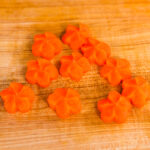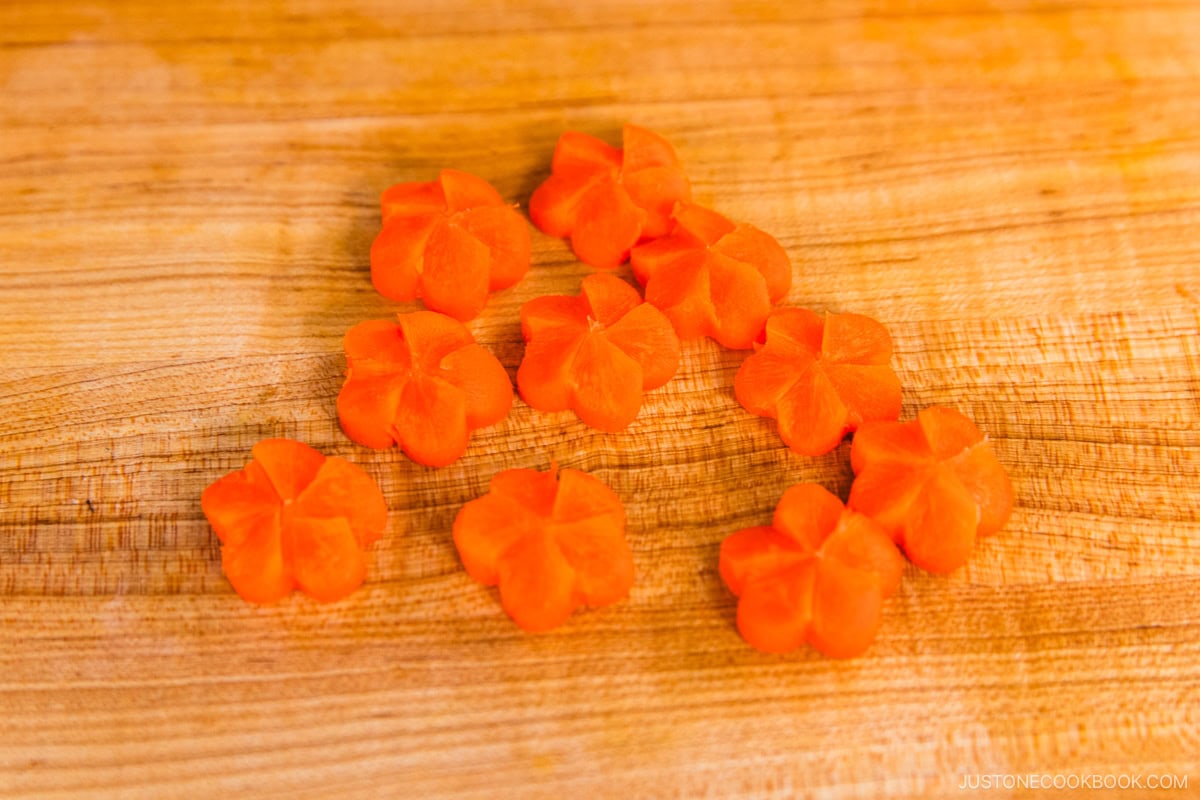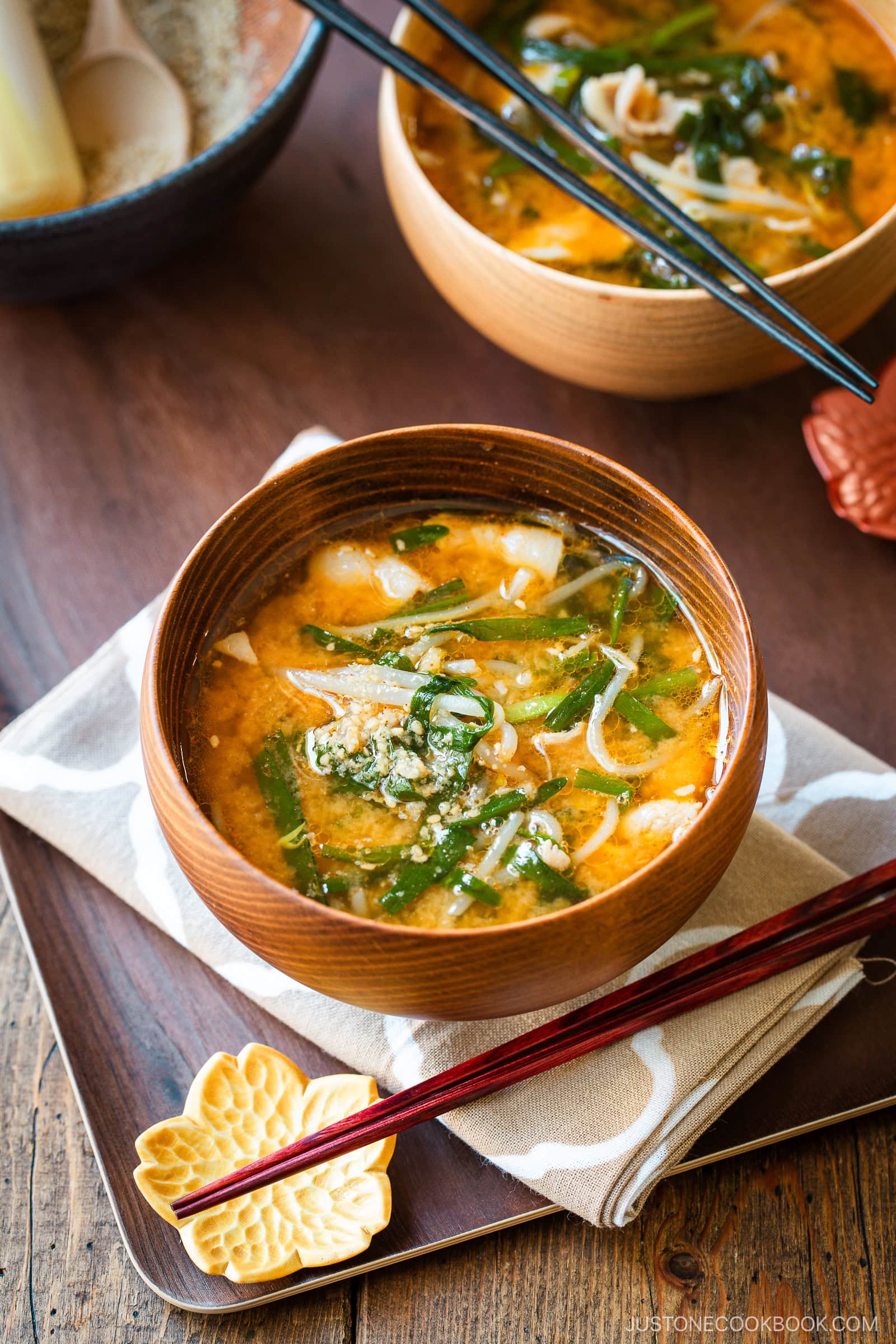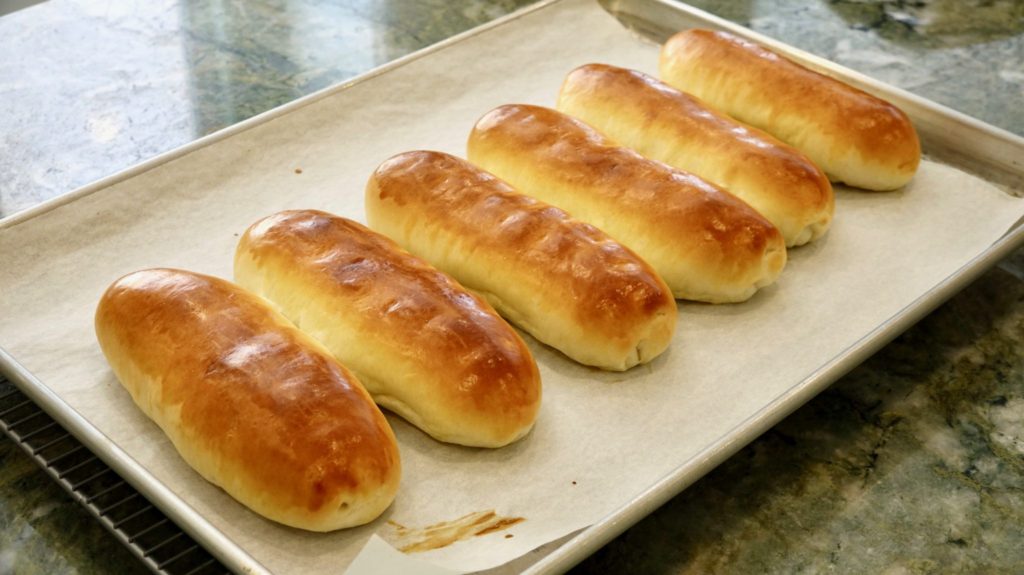Discover the art of transforming carrots into stunning flower shapes for exquisite Japanese food presentation. From basic vegetable cutter techniques to intricately hand-carved plum blossoms (Nejiri Ume), this guide will walk you through step-by-step methods to elevate your culinary creations.
In Japanese cuisine, carrot coins shaped like flowers are often added to simmered and hot pot dishes, enhancing both celebratory occasions and everyday meals. This article will guide you through both beginner and advanced techniques for creating flower-shaped carrots, particularly the iconic Japanese plum blossoms known as Nejiri Ume (ねじり梅). With a bit of practice, you’ll find it easy to master this skill, and your food presentation will be transformed!
Learn how I incorporate Nejiri Ume in my Sukiyaki, Shabu Shabu, and Chikuzenni (Nishime) recipes!
What is Nejiri Ume?
Nejiri ume (ねじり梅) translates to “twisted plum.” This decorative cut is used to carve plum flowers from carrots, commonly found in hot pots and simmered dishes. In Japan, plum trees are among the first to blossom in the new year, appearing from late January to mid-March, depending on the region. These flowers bloom in the cold winter, symbolizing resilience, perseverance, and the promise of spring.
Why I Love Nejiri Ume (Carrot Flowers)
- Enhances presentation – Nejiri ume adds a charming flair to my Japanese dishes, and it only takes a few minutes to create.
- Choose your method – Use a vegetable cutter for simple flowers or refine the petals with a knife for a more elegant 3D effect. With practice, the advanced technique will become second nature.
- Versatile for any occasion – These delightful flower-shaped carrots are perfect for everyday meals like bento or special dishes for osechi ryori (Japanese New Year cuisine) and other festive gatherings.
Types of Food for Decorative Flowers
- Carrots (large) for red flowers
- Daikon for white flowers
Find the printable tutorial with measurements below.
Key Kitchen Tools
- Vegetable cutter in the shape of a plum blossom, featuring rounded and smooth petals. Cherry blossoms, in contrast, have notched or split tips on each petal.
- Sharp kitchen knife – A solid chef’s knife is recommended for this task. I use a high-quality Nagomi Damascus Gyuto Chef Knife, which can be found at a specialized kitchen goods store. Alternatively, a nakiri knife (Japanese vegetable knife) is also suitable for cutting vegetables.
How to Cut Carrots into Flower Shapes
Beginner Method: Vegetable Cutter
- Slice coins and punch. Peel the carrot and cut it crosswise into rounds ¼ inch (6 mm) thick. Use a vegetable cutter to create flower shapes. Your simple flowers are now ready to use.
Advanced Method: Decorative Knife Cut
- Slice coins and punch. Peel the carrot and cut it crosswise into rounds ½ inch (1.2 cm) thick. Use a vegetable cutter to create flower shapes.
- Cut slits and shave the petals. Use the tip of your knife to score slits ⅛-inch (3-mm) deep between the petals, starting at the edge where the petals meet and ending in the center of the flower. Angle your knife blade down the middle of a petal and cut diagonally toward the left (if you’re right-handed) to the slit, shaving off a thin wedge of carrot. Repeat with the other petals.
- Repeat with the other petals.
Nami’s Tips
- Use large carrots – Ensure the carrot’s circumference is slightly larger than your vegetable cutter for optimal flower shapes.
- Cut the coins thick enough – Avoid cutting the rounds too thin; adequate thickness is necessary to carve petals on both sides.
- Make the slit shallow – Score between the petals just ⅛-inch (3-mm) deep to allow for carving on the reverse side.
- Shave diagonally toward the slit – Start at the center line of the petal and shave off a thin wedge of carrot on just the left side (if you’re right-handed).
- Repurpose the carrot scraps – Don’t waste the leftover bits! Mince them and add to dishes like spaghetti meat sauce, Japanese fried rice with edamame, or soups.
How to Use Carrot Flowers (Nejiri Ume)
Frequently Asked Questions
While nejiri ume is typically made with carrots, you can also create daikon no nejiri ume using daikon radish.
You can create a decorative flower pattern on shiitake mushroom caps using the unique Japanese cutting technique known as Shiitake Hanagiri.

Prevent your screen from going dark
-
Peel 1 carrot. You will need a vegetable cutter in the shape of ume (a Japanese plum blossom). Plum blossom petals are rounded and smooth, while cherry blossom petals have a notched or split tip.
Nami’s Tip: Use a large carrot with a diameter equal to or slightly larger than your vegetable cutter for the best results. -
For the beginner method, slice the carrot crosswise into coins about ¼ inch (6 mm) thick—perfect for using a vegetable cutter.
For the advanced method, slice the carrot slightly thicker, about ½ inch (1.2 cm), to allow for more detailed carving of the Nejiri Ume.
Beginner Method: Vegetable Cutter
Advanced Method: Decorative Knife Cut
-
Punch out plum flower shapes from the carrot slices using a vegetable cutter. Then, with the tip of a knife, cut small slits between each pair of petals to define the shape.
Nami’s Tip: Make a ⅛-inch (3 mm) deep cut between the petals, starting where they meet at the edge and stopping at the center of the flower. -
Now, shave the petals to create a more realistic flower shape. Place your knife blade at the center of a petal and angle it slightly. If you’re right-handed, cut diagonally toward the left, shaving a thin wedge of carrot toward the slit made earlier. Repeat with the other petals.
-
This extra carving step may seem tedious, but it truly brings the flower to life—ideal for festive presentations and osechi plating.
To Use the Decorative Flowers
Editor’s Note: This post was originally published on December 24, 2012. It was republished with more helpful information on June 29, 2025.





